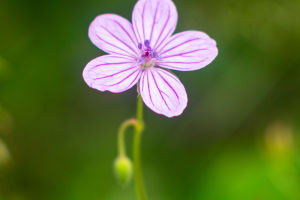The arrival of spring is always accompanied by the revival of all things.
The earth seems to be gently awakened, as the world, which has remained silent throughout the long winter, is finally stirred by the first rays of warm sunshine.
At this time of year, the most striking sight is undoubtedly the flowers in full bloom. They symbolize a new beginning and serve as a reminder of the power and beauty of nature.
The blooming of flowers is not only a visual pleasure; it represents the cycle and growth of life. Every flower that blossoms has gone through an intricate process—starting from seeds, germinating, and forming buds before they eventually bloom.
This process is lengthy and filled with anticipation. People often overlook the birth process of flowers, remembering only their vibrant, dazzling appearance under the sun. In reality, every bloom is a meticulously orchestrated event by nature, with countless efforts and small miracles behind it.
When we slow down and observe a flower closely, we discover that every petal, every vein, has its unique beauty. Some are bold and vivid, others are subtle and delicate.
But regardless of their color or form, they all reflect the diversity and infinite possibilities of life. The varying bloom times and different shades feel like gifts from nature, teaching us how to display our unique beauty at every stage of life.
Flowers in full bloom not only create a visual impact but also often remind us of the journey of life. Life is like the blooming process of a flower—starting from germination, blossoming in its prime, then fading with time.
In our youth, we are like freshly sprouted seeds, filled with hopes and uncertainties about the future. As the years go by, we grow, face storms, absorb nutrients, and gather experience. Eventually, we reach the blooming period of our own lives, in our own time.
However, the beauty of flowers is fleeting. With the changing seasons, they will inevitably wither and return to the earth. This may seem sorrowful, but within nature's laws, the withering of each flower prepares the way for the next rebirth.
Their petals fall with the wind, becoming nutrients in the soil, nourishing the seeds of the next generation. Just like life, although we experience aging and farewells, the end of one life marks the beginning of another.
Sometimes, standing in a garden full of blooming flowers, we can't help but reflect on the brevity and fragility of life. But when we truly grasp the meaning behind the bloom, we understand that it’s not the length of time that the flowers are in bloom that matters, but how brilliant they are in that moment.
In their short life span, flowers relentlessly pursue the sun and return to the earth, revealing their most beautiful selves without hesitation. This spirit may be the most precious lesson that nature offers us—no matter how long life is, we must live it with our whole hearts and bloom to our fullest potential.
Flowers often carry deep symbolic meanings in various cultures. For example, roses symbolize love, while lotuses represent purity and resilience. In ancient Chinese poetry, flowers are frequently used as metaphors for human nature and emotions.
Every flower that blooms is a gift from nature to us. They tell their stories of life in unique ways. As part of this grand natural play, we too should learn how to bloom on our stage.
Everyone has their own time to blossom—whether early or late, we must trust that at the right moment, we will arrive at the peak of our lives, displaying our beauty most perfectly.
Like these blooming flowers, we will also face storms and endure the test of time. But no matter when or where we must never forget the courage to bloom in the sun. Let our lives, like flowers, leave behind the most beautiful traces in their brief journey.


